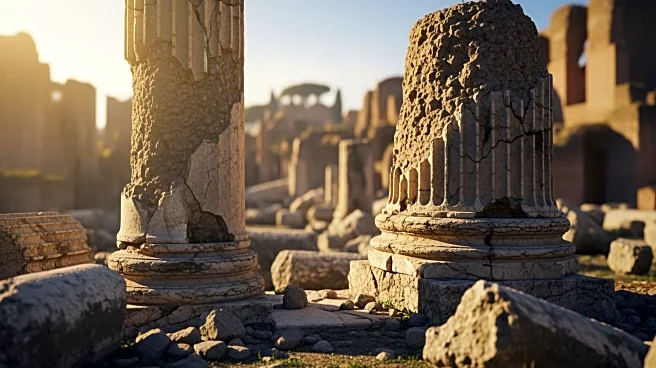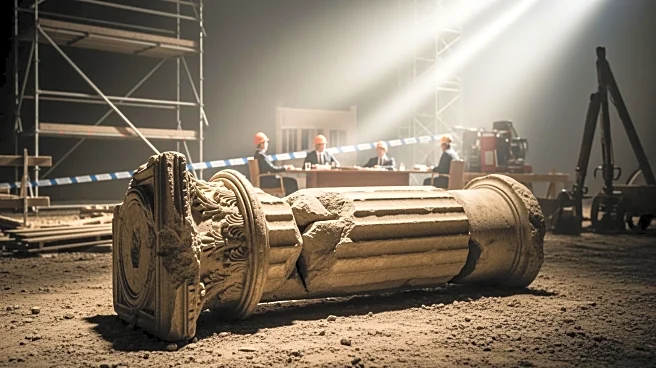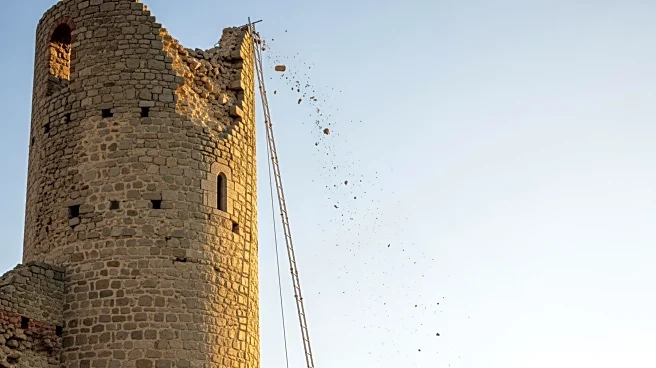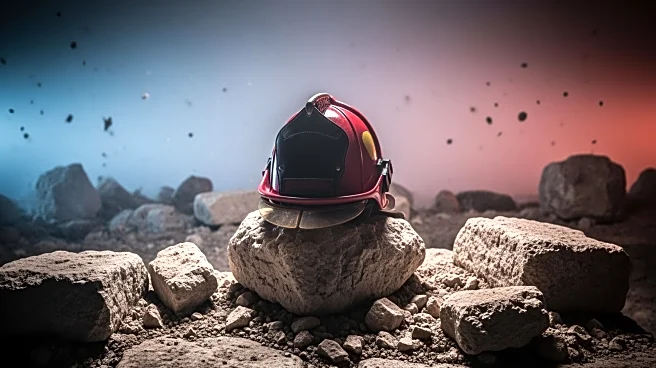What's Happening?
A medieval tower in Rome, known as Torre dei Conti, partially collapsed during renovation work, leading to the tragic death of a worker. The collapse occurred near the Colosseum, trapping one worker under the rubble. Despite rescue efforts by emergency
services, the worker succumbed to his injuries shortly after being extracted. The tower, originally built in the 13th century, has a history of structural issues, having been damaged by an earthquake in 1349 and experiencing further collapses in the 17th century. The current restoration project, valued at nearly $8 million, aimed to stabilize the structure and install modern amenities.
Why It's Important?
The collapse of the Torre dei Conti highlights the challenges and risks associated with restoring historical structures. It underscores the importance of thorough structural assessments and safety measures in renovation projects, especially for buildings with known vulnerabilities. The incident may prompt a reevaluation of restoration practices and safety protocols in Italy, potentially influencing future projects involving historical sites. The tragedy also draws attention to the precarious conditions faced by workers in the construction and restoration industries.
What's Next?
Italian prosecutors have initiated an investigation into the collapse, focusing on potential charges of negligent disaster and injuries. This legal scrutiny could lead to changes in regulatory standards for restoration projects, emphasizing worker safety and structural integrity. The incident may also affect public perception and policy regarding the preservation of historical sites, possibly leading to increased funding or stricter oversight. Stakeholders, including government officials and cultural heritage organizations, are likely to engage in discussions to prevent similar occurrences in the future.
Beyond the Headlines
The collapse raises ethical questions about the balance between preserving historical heritage and ensuring modern safety standards. It may spark debates on the prioritization of cultural preservation versus the safety of workers and the public. Additionally, the incident could influence cultural attitudes towards historical sites, potentially affecting tourism and public interest in heritage conservation.















